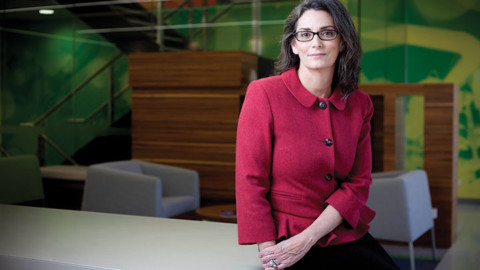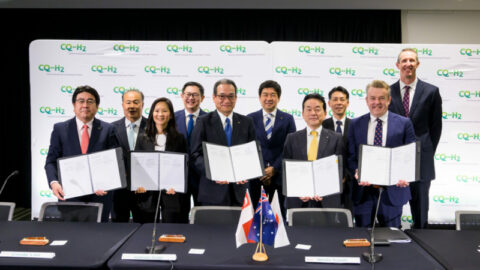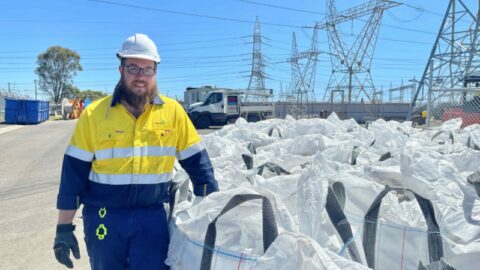As Australia’s energy transition accelerates, a new generation of digital solutions are needed to coordinate an increasingly decarbonised, decentralised and democratised electricity network.
Dr John McKibbin leads CSIRO’s research in energy systems digitalisation. He is driving research programs working to enhance energy forecasting, system planning and network visibility.
“The current energy transition will be the defining challenge of our time. If you can imagine our energy market as a machine, then consider that we’re creating the largest and most complex machine ever invented. In real time,” Dr McKibbin said.
“There are three challenges that energy digitalisation can help us solve. And if we solve these challenges, we will be on our way to decarbonising our energy system.”
1. Sharing the load
As we enable the rapid electrification of our transportation, buildings and industry, more pressure will be placed on the grid to meet the growing demand for electricity. The capacity of our grid is finite, so maintaining the balance between supply and demand is crucial.
Strategically shifting load to low demand periods can restore balance to the grid during peak events, avoid wasteful overgeneration of renewables and increase grid resilience, reliability and affordability.
In doing so we can turn large flexible loads such as heating, air conditioning, hot water heaters, and electric vehicles into distributed energy resources for the grid, effectively creating a giant battery. The practice of operating appliances during off-peak periods when energy rates are lower is not new. But the introduction of smart technology has provided the capacity to automate and optimise load timing to maximise efficiency and consumer savings.
Empowering smart buildings
Commercial buildings are responsible for around 25 per cent of electricity use in Australia and ten per cent of emissions. To improve energy efficiency, property managers need comprehensive and accurate building data and reliable processes to connect diverse data sets.
The Data Clearing House (DCH) is a digital solution developed by CSIRO in collaboration with industry innovation and university research teams. The platform streams disparate sources of building data to a single location and includes information from external authorities such as the weather bureau and electricity market. By consolidating these insights, the DCH unlocks quality data trends and intelligence, empowering building managers to realise energy savings and flexible load opportunities.
2. Making the invisible visible
Australian households and businesses are changing the way our energy is produced. They are taking a more active role in energy generation through the uptake of distributed energy resources (DERs) such as solar and battery storage. The rapid integration of DERs into the grid has introduced technical and operational challenges. DERs can be invisible to energy network operators, who may only see the change in net demand that they cause.
The lack of visibility compromises the network’s capacity to understand DER behaviour and effectively manage the power system. This can lead to blackouts and equipment damage if the physical limits of the distribution network are breached. DERs can be connected and operated at scale through microgrids and virtual power plants (VPPs), offering enormous potential to contribute to a reliable and secure energy system.
Realising our distributed energy potential
CSIRO, through the RACE for 2030 collaborative research centre, developed a strategy with network businesses, universities and tech companies to increase our visibility of the low-voltage network and help enhance the capacity of the network to host DERs. A range of opportunities were identified to enhance network visibility, including better leveraging smart meter and smart inverter data and installing new emerging network monitoring technologies.
The collaborative research program is now working to enhance the network visibility and hosting capacity of the low voltage distribution network, including:
» Developing data standards, interchange protocols and data integration platforms
» Developing improved analytical workflows for network planning and operations including hosting capacity assessments and dynamic operating envelopes
» Identifying the value of DER services for networks and customers
3. Powering on with inverter-based systems
Australia’s expansion of renewable energy is skyrocketing – up to ten times the average worldwide per capita rate. Large synchronous fossil-fuel based generators support grid strength and stability, so our transition to non-synchronous, or inverter-based systems from renewable energy presents challenges and requires new solutions.
“We need to make our inverter-based systems smarter. Currently, they are largely grid following, which means they rely on the rest of the network to manage energy disturbances and fluctuations. As we increase the share of inverter-based resources, they will increasingly need to be grid forming in order to contribute to system strength and stability,” Dr McKibbin said.
Emerging research is investigating how large-scale batteries with grid forming inverters can provide system strength and stability capabilities, as higher levels of variable renewable energy are integrated into the grid.
Contributing to a global energy vision
The Global Power System Transformation (G-PST) Consortium engages power system operators, research institutions and governments from all regions of the world to accelerate the global transition to clean energy at unparalleled scope and scale. CSIRO and the Australian Energy Market Operator (AEMO) are Australian Consortium representatives, supported by Australian and international engineering, academic and research partners.
CSIRO’s G-PST Research Roadmap incorporates research plans for the nine most pressing research topics to integrate renewable energy into our electricity networks and decarbonise our energy sector, including:
» New capabilities, services, design methodologies and standards for inverter-based resources
» New technologies and approaches for power system operator control rooms to provide more real-time visibility, analysis and control
» Quantifying the technical service requirements of future power systems to maintain the supply-demand balance and affordability of renewables
» New procedures for black starting and restoring a power system with high or 100 per cent Inverter-based resource (IBR) penetration
CSIRO is currently working with academic and industry experts across Australia to deliver the roadmap, in collaboration with the global consortium.
Rewiring our future
Solving these three challenges is imperative to ensuring that our future energy supply is sustainable, affordable and secure. As Australia’s independent science agency, CSIRO is uniquely positioned to connect, guide and accelerate our energy transition.
“But it will require an extraordinary uplift in digital capability,” said Dr McKibbin. “And this cannot be achieved if innovation occurs in silos. What we need is for industry practitioners, regulators, government, researchers and communities to collaborate at unprecedented levels.”
This sponsored editorial was brought to you by CSIRO,. Learn more about CSIRO’s energy research at www.csiro.au/energy


















